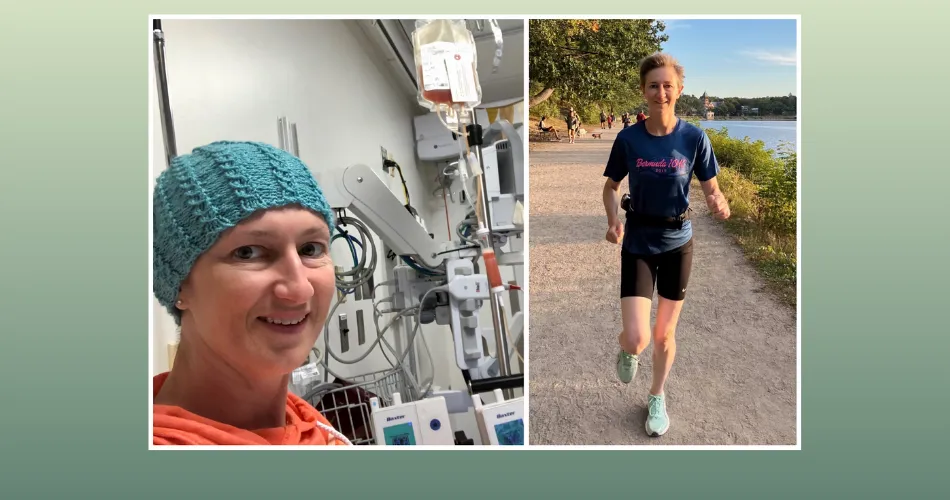What is Relapsed & Refractory AML?

What is Relapsed and Refractory AML?
Relapsed AML means that the disease has returned after a period of remission. Blood counts may be abnormal again. At this time, a discussion about treatment options to try to get the disease back into remission may be warranted.
Refractory AML means that the disease has not gone away and has not responded to two cycles of chemotherapy. AML patients who are progressing while on therapy are considered "refractory" to their treatment.
Facts about AML Relapse
- Despite significant advancements in AML drug therapy over the past five years, relapse affects about 50% of all AML patients.
- Relapse may occur several months to years after an initial remission; however, most relapses occur within two years of initial treatment.
- The signs and symptoms of relapse are similar to those present at the original disease onset.
- A relapse diagnosis will most often be obtained using the same tests that were used to establish the original diagnosis.
What’s Next After Relapsed/Refractory AML?
If your AML has relapsed, the goal is to achieve another remission. You may receive treatment to prevent AML cells from spreading to the spine or brain. If you are considering a blood stem cell transplant (HCT), this would be the time to start searching for a stem cell donor.
If your AML is refractory and has not responded to treatment, you should receive genetic testing to determine your AML type such as IDH1, IDH2, and FLT3 mutations. Finding your AML type will help you determine the next treatment steps.
Treatment options for relapsed/refractory AML include:
- Clinical trial
- Targeted therapy or chemotherapy followed by a stem cell transplant
- Repeat the first successful induction regimen if it's been 12 months or more since the induction regimen
- Best supportive care
- Standard treatment approaches that you have not had before (for example, azacitidine with venetoclax)
Based on your AML type, targeted therapy options for relapsed/refractory AML include:
- AML with FLT3-ITD gene mutation
- Gilteritinib (Xospata)
- Hypomethylating agents like azacitidine or decitabine with sorafenib
- AML with FLT3-TKD gene mutation
- Gilteritinib
- AML with IDH1 gene mutation
- Ivosidenib (Tibsovo)
- Olutasidenib (Rezlidhia)
- AML with IDH2 gene mutation
- Enasidenib (Idhifa)
- CD33-positive AML
- Gemtuzumab ozogamicin (Mylotarg)
Learn More About Relapsed & Refractory AML from Experts
Check out HealthTree University to continue learning about relapsed and refractory AML by clicking on the button below. You will find answers to crucial questions such as:
- If remission rates are high in AML, why are many patients not cured?
- How do I know what my risk of AML relapse is?
- What are the strategies for AML patients who have relapsed?
- If I relapse, is the previous treatment given again, or should I consider a new therapy?
Watch the Relapsed & Refractory AML HealthTree University Unit
Join the HealthTree for AML Newsletter!
We invite you to click the button below to subscribe to the HealthTree for AML newsletter and stay updated on the latest advancements in acute myeloid leukemia.
JOIN THE HEALTHTREE FOR AML NEWSLETTER
Sources:
What is Relapsed and Refractory AML?
Relapsed AML means that the disease has returned after a period of remission. Blood counts may be abnormal again. At this time, a discussion about treatment options to try to get the disease back into remission may be warranted.
Refractory AML means that the disease has not gone away and has not responded to two cycles of chemotherapy. AML patients who are progressing while on therapy are considered "refractory" to their treatment.
Facts about AML Relapse
- Despite significant advancements in AML drug therapy over the past five years, relapse affects about 50% of all AML patients.
- Relapse may occur several months to years after an initial remission; however, most relapses occur within two years of initial treatment.
- The signs and symptoms of relapse are similar to those present at the original disease onset.
- A relapse diagnosis will most often be obtained using the same tests that were used to establish the original diagnosis.
What’s Next After Relapsed/Refractory AML?
If your AML has relapsed, the goal is to achieve another remission. You may receive treatment to prevent AML cells from spreading to the spine or brain. If you are considering a blood stem cell transplant (HCT), this would be the time to start searching for a stem cell donor.
If your AML is refractory and has not responded to treatment, you should receive genetic testing to determine your AML type such as IDH1, IDH2, and FLT3 mutations. Finding your AML type will help you determine the next treatment steps.
Treatment options for relapsed/refractory AML include:
- Clinical trial
- Targeted therapy or chemotherapy followed by a stem cell transplant
- Repeat the first successful induction regimen if it's been 12 months or more since the induction regimen
- Best supportive care
- Standard treatment approaches that you have not had before (for example, azacitidine with venetoclax)
Based on your AML type, targeted therapy options for relapsed/refractory AML include:
- AML with FLT3-ITD gene mutation
- Gilteritinib (Xospata)
- Hypomethylating agents like azacitidine or decitabine with sorafenib
- AML with FLT3-TKD gene mutation
- Gilteritinib
- AML with IDH1 gene mutation
- Ivosidenib (Tibsovo)
- Olutasidenib (Rezlidhia)
- AML with IDH2 gene mutation
- Enasidenib (Idhifa)
- CD33-positive AML
- Gemtuzumab ozogamicin (Mylotarg)
Learn More About Relapsed & Refractory AML from Experts
Check out HealthTree University to continue learning about relapsed and refractory AML by clicking on the button below. You will find answers to crucial questions such as:
- If remission rates are high in AML, why are many patients not cured?
- How do I know what my risk of AML relapse is?
- What are the strategies for AML patients who have relapsed?
- If I relapse, is the previous treatment given again, or should I consider a new therapy?
Watch the Relapsed & Refractory AML HealthTree University Unit
Join the HealthTree for AML Newsletter!
We invite you to click the button below to subscribe to the HealthTree for AML newsletter and stay updated on the latest advancements in acute myeloid leukemia.
JOIN THE HEALTHTREE FOR AML NEWSLETTER
Sources:

about the author
Megan Heaps
Megan joined HealthTree in 2022. She enjoys helping patients and their care partners understand the various aspects of the cancer. This understanding enables them to better advocate for themselves and improve their treatment outcomes.
More on Core Education
Trending Articles

Get the Latest Acute Myeloid Leukemia Updates, Delivered to You.
By subscribing to the HealthTree newsletter, you'll receive the latest research, treatment updates, and expert insights to help you navigate your health.
Together we care.
Together we cure.
3x Faster.









